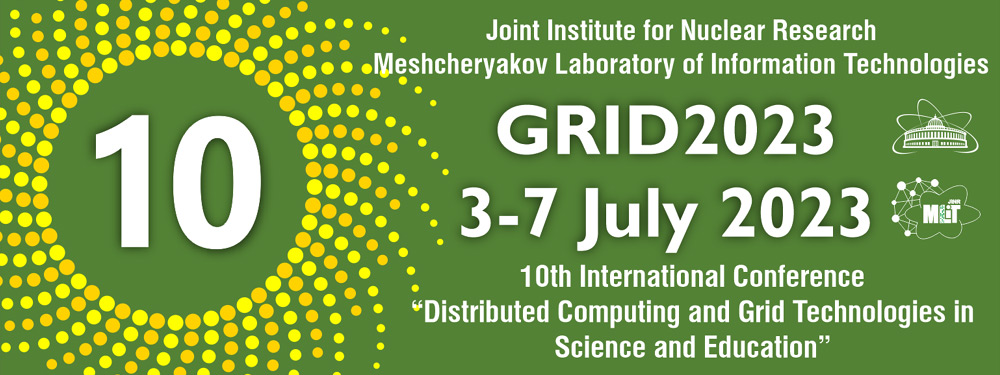Speaker
Description
The general goal of dynamic modeling of complex systems is to reveal the patterns of their behavior in time and changes in time of the quantitative characteristics of interacting components. The key condition for the adequacy of the model to a real object is the correspondence between the structure of the model and the real system, as well as the correspondence of the form of equations to the mechanisms and parameters of interaction of its constituent elements. The report presents the results of recent work on mathematical and computer modeling of photosynthesis processes in a wide range of characteristic times from nanoseconds to minutes, performed at the Department of Biophysics, Faculty of Biology, Lomonosov Moscow State University [1,2].
Photosynthesis is the only process on Earth that converts the energy of sunlight and stores it in the form of chemical bond energy. Light energy is absorbed in the photosynthetic membrane, which initiates a complex set of interacting processes based on electron transport along the so-called photosynthetic chain. In a series of kinetic models of different degrees of detail, the processes in the photosynthetic membrane are simulated, including electron transfer in the reaction centers of photosystems I and II, linear and cyclic electron transport, the role of the electrochemical potential, buffer groups, and the regulation of coupling processes with the carbon fixation cycle are taken into account [1,3, 4.8]. Fitting the model curves according to the data of spectral measurements made it possible to estimate the values of parameters that are inaccessible to direct experimental measurement. Models based on the Monte Carlo method [5] reproduced probabilistic processes in ensembles of photosynthetic chains, the size of which is comparable to their number in microalgae cells (millions of individual chains). To analyze large arrays of experimental fluorescence induction curves of microalgae obtained by growing cultures of microalgae in a photobioreactor and in the course of natural observations, we use machine learning methods. We developed the method of multi-exponential approximation, which makes it possible to determine the sections of the photosynthetic chain that undergo changes in the course of culture growth under various conditions of mineral deficiency in biophotoreactors and under conditions of environmental pollution. [6]. Using step-by-step Brownian and molecular computer modeling, the process of formation of a functionally active protein-protein complex of photosynthetic proteins of cytochrome f and plastocyanin of higher plants, green algae and cyanobacteria was described [7,8]ю The combined use of kinetic Birounian and molecular models provides a powerful tool in the study of cellular and molecular mechanisms of photosynthesis regulation.
Referenses
1. Riznichenko G.Yu., Rubin A.B. Dynamic models of electron transport in photosynthesis Izhevsk-M., Izd. IKI, 2020, 332 p.(Rus)
2. Riznichenko G.Yu., Rubin A.B. Horizons of biophysics v. 1. Edited by A.B. Rubin M.-Izhevsk, Izd IKI, 2022, p. 193-220 (Rus)
3. Riznichenko, et al., Biophysical Rev. 2022 https://doi.org/10.1007/s12551-022-00988-w\
4. Belyaeva et al., 2020. Photosyn. Rev. DOI: 10.1007/s11120-020-00774-3
5. Antal et al., 2018. Photosyn.Res. DOI: 10.1007/s11120-018-0564-2
6. Plusnina et al., 2020. Photosynthetica. DOI: 10.32615/ps.2020.002
7. Fedorov et al., 2019. Physiologia Plantarum DOI: 10.1111/ppl.12940
8. Riznichenko, et al., 2022. Buichemistry, DOI: 10.1134/S0006297922100017
emphasized text
Summary
In the photosynthetic membrane, the energy of sunlight is converted into the energy of chemical bonds, thereby ensuring the existence of life on Earth. To model the primary processes of photosynthesis, both kinetic and agent (atomistic) multiparticle models are used. The “agents”, “atoms” here at different levels of detail are the atoms themselves (models of quantum chemistry and molecular dynamics), fragments of varying degrees of aggregation (coarse-grained models), biomacromolecules (Brownian dynamics models), individual electron transport chains (stochastic models like Monte Carlo). Comparison of the data of kinetic, Brownian and molecular modeling makes it possible to study the mechanisms of switching of electron flows in plant and algae cells, determine the places of influence of unfavorable factors, and evaluate the optimal conditions for the release of target products by cells. The material of the article is based on the results of research carried out at the Department of Biophysics, Faculty of Biology, Moscow State University named after M.V. Lomonosov (Riznichenko, Rubin, 2020).

